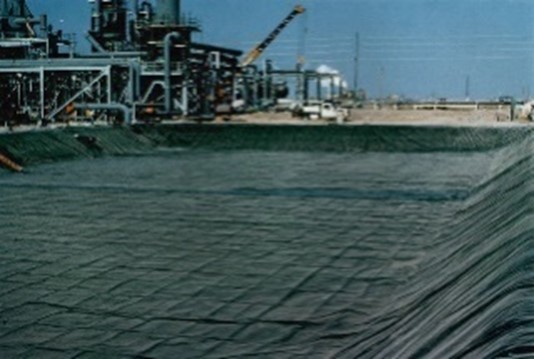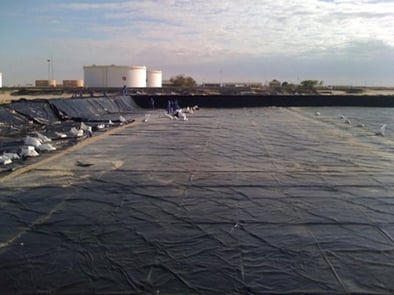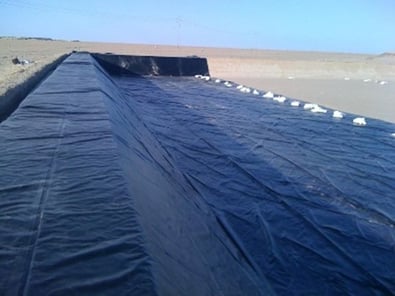Geomembrane Selection and Use in Evaporation ponds
Part 3: Four Geomembrane properties needed to contain Evaporation Pond processes
The previous posts in this series have discussed evaporation pond use and operations. The demands of the process also have indicated where geomembrane properties and performance are critical. In this final post, we will explore 4 major geomembrane properties that are essential for a successful lined evaporation pond. Click to view Part 1 and Part 2 of this series.
Containment alternatives. Geomembranes are the preferred method of containment for evaporation ponds. The versatility, cost savings and reliability of properly selected and installed geomembranes is the choice worldwide. There are critical properties which are needed for a geomembrane to line an evaporation pond.
- Elevated temperature resistance – The pond contents may get extremely hot so the geomembrane must be able to withstand the heat. This includes UV resistance and seam strength (both instantaneous and constant loading).
- Chemical resistance – The application may contain hydrocarbons, high Total Dissolved Solids (TDS), or other chemicals. Produced and Flowback water from Fracking operations for instance can be extremely high in TDS. The elevated temperature and changing nature of the liquid contained in an evaporation pond must also be considered.
- Thermal Expansion-Contraction – Many evaporation ponds are in arid environments with large diurnal thermal swings. If the geomembrane polymer moves with temperature changes, it creates stress that can result in cracking and ultimate failure. The geomembrane must be thermally stable. Further, thermally induced wrinkling creates dams that impede movement of water, making evaporation less efficient and making cleaning or solids removal difficult.
- Survivability – The geomembrane must have robust physical properties including puncture, yield tensile and seam strength equal or exceeding sheet material strength. The proper design of the geomembrane system must account for removal of solids if it is a part of the project.
Shown below are two Evaporation ponds, both lined with the XR-5 Reinforced Ethylene Copolymer geomembrane. Note these characteristics of the sites and the geomembrane.

XR-5 Lined Evaporation Pond. Geothermal application.
California, USA

XR-5 lined Evaporation Pond. Oil Terminal application.
Libya

XR-5 lined Evaporation Pond. Oil Terminal application.
Libya
- Both ponds are shallow to maximize heat content in the liquid.
- The geomembrane has high thermal resistance, inherited in the compound itself.
- No cover is placed or needed over the XR-5. With both UV stability and a Coefficient of thermal expansion-contraction (CTE) that is essentially negligible, it will remain flat and stable. Some geomembranes have CTE values orders of magnitude higher.
- Neither pond has an underlying geotextile. A geotextile layer would be used in a pond of this type to supplement the puncture resistance of the geomembrane. What would be missing would be protection from solids above the liner which will accumulate. The XR-5 has high puncture strength and did not require supplemental puncture resistance.
- One site is for geothermal saltwater, and one is for crude oil/water. The XR-5 was chosen for its resistance to both liquids, at elevated temperatures.
- Normal loading on a flat surface will translate into tensile loading. High yield tensile strength along with seam strength equal or greater than parent sheet strength ensures a “weakest link” is not created.
- A second manufacturing step, prior to installation to make large membrane panels greatly reduces time, cost, and complexity of installation. Long term survivability is enhanced.
Geomembranes are an integral part of an evaporation process. Make sure to select, design and install the one that will best work with the process and site conditions.
All photos are sourced from Seaman Corporation.



